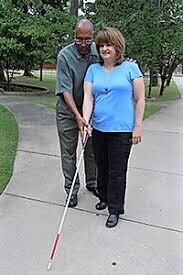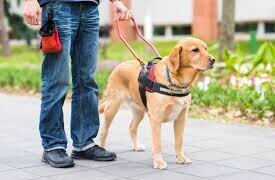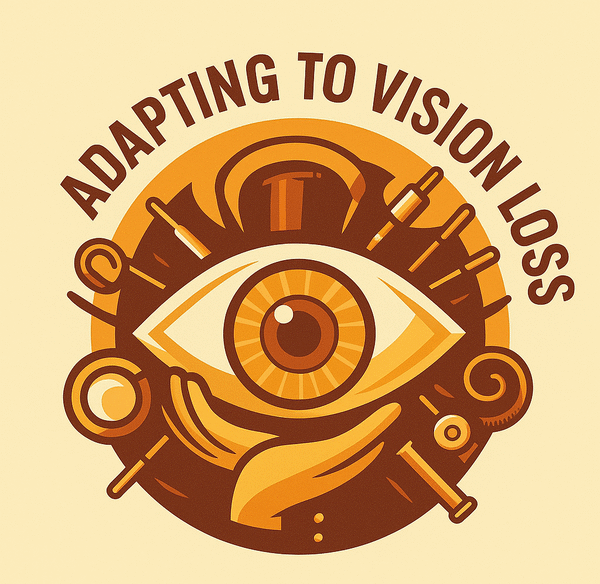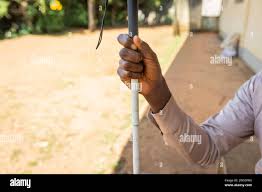When I first started losing my vision, I had no idea how much I relied on visual cues to get through my day. Just walking across a parking lot or navigating my own kitchen became a challenge. But over time, I discovered something incredibly powerful—Orientation and Mobility (O&M) training.
Learning how to move through the world again, safely and confidently, was a game changer. If you’re new to vision loss, or even if you’ve been living with it for a while but still feel unsure when you’re out and about, I want to share what I’ve learned. There are tools and techniques that can help you regain your independence—and you don’t have to figure it all out on your own.
What Is Orientation and Mobility, Really?
In the beginning, I thought mobility training just meant “learning to use a cane,” but it’s so much more than that. Orientation and Mobility (O&M) is about understanding your surroundings, learning how to move through them, and developing confidence—whether you’re navigating a sidewalk or a supermarket.
An Orientation and Mobility Specialist (or O&M instructor) can help you build those skills in a way that fits your life. My training was personalized and hands-on, and it helped me reconnect with my independence in a way I didn’t think was possible.
Here’s What Helped Me Most
🦯 White Cane Training
My cane felt awkward at first. I’ll be honest—I resisted it. But after a few lessons, I realized how much freedom it gave me. I learned how to use the cane to detect curbs, stairs, changes in terrain, and even unexpected objects in my path.
It became more than just a tool—it became an extension of my awareness. I now go places I used to avoid because I feel safe and in control.
 Learning to use a white cane was the first step in regaining my confidence and independence.
Learning to use a white cane was the first step in regaining my confidence and independence.
🐕 Guide Dog Options
I haven’t personally trained with a guide dog (yet!), but I’ve met many people who have, and they swear by it. If you’re someone who thrives with companionship and prefers a more intuitive approach to navigation, a guide dog might be a great fit.
The process involves matching you with the right dog and going through some serious training together, but the bond and teamwork are unmatched.
 Guide dog training builds a bond of trust and teamwork that can open up a whole new level of independence.
Guide dog training builds a bond of trust and teamwork that can open up a whole new level of independence.
📱 Technology That Makes a Difference
I’ve used apps like Soundscape and BlindSquare to help with orientation when I’m in unfamiliar areas. Voice-guided GPS, talking compasses, and even smart glasses are becoming more common. These tools can’t replace traditional training, but they can absolutely enhance it.
Your O&M instructor can show you how to use tech in ways that work best for your daily life.
 Technology like mobility apps gave me an extra layer of confidence when navigating unfamiliar places.
Technology like mobility apps gave me an extra layer of confidence when navigating unfamiliar places.
🏠 Indoor Navigation Counts, Too
Getting around inside matters just as much as outside. I’ve picked up strategies for safely moving through unfamiliar buildings, identifying landmarks by touch or sound, and even marking areas in my home with tactile indicators or smart labels. It’s all part of the same toolkit.
How to Start Your Journey
If any of this sounds like something you need, here’s what I suggest:
- Talk to your eye doctor or rehab counselor about O&M services.
- Reach out to your state’s vocational rehabilitation agency or a local center for the blind.
- Look into national organizations like the American Council of the Blind or Hadley, which often offer referrals and online training options.
You don’t need to be completely blind to benefit from O&M. If you’re navigating low vision, the right training can still make all the difference.
Final Thoughts: Regaining Independence
Learning how to move through the world again wasn’t always easy—but it was absolutely worth it. O&M training gave me back a sense of freedom I thought I’d lost. If you’re feeling stuck, scared, or unsure of your next step, just know that support is out there. And it works.
Let this be the moment you take that first step—literally and figuratively.

